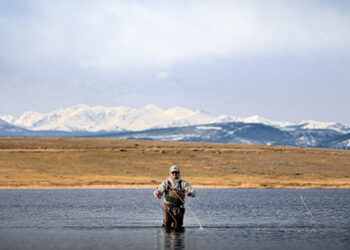Whether you like it or not, there are risks in your campus recreation facility. So the question to ask is, are you prepared?
“Don’t believe that things can’t happen to you or on your shift, because it can and it will. You have to be prepared, so reinforcing that type of message with student staff, I think, is critical,” said Dave DeAngelo, the senior associate director of facilities at the Ohio State University.
Even with having worked on their Emergency Action Plan (EAP) since before opening the Recreation and Physical Activity Center (RPAC), DeAngelo said tweaks are continuously being made. Whether it’s due to renovations, or the fact that “active shooter” wasn’t in anyone’s vernacular 12 years ago, things change. He explained you need to make it a habit to look at your EAP every year, send it to your staff and have everyone review it, updating where necessary.
Stacy Hartwig, the assistant director of injury prevention and care/risk at the University of Nebraska at Omaha’s Management Wellness Center, said something similar. “Constantly be looking at your current EAPs to see if they are working as smoothly as they could,” she said. “Don’t be afraid to adapt your procedures if you think something else would work better.”
Hartwig said asking questions like, “What is the most efficient way to accomplish our task?” and “What steps are needed to accomplish our task?” can help determine where to strategically place students, AEDs, first aid kits, phones, etc.
But even a well-reviewed EAP is nothing if it isn’t put into practice. Jackie Sales, the aquatics coordinator at Coastal Carolina University, explained on top of CPR, first aid, AED and Bloodborne Pathogen training, they also perform surprise assessments that ask, “If this scenario happened, what do you do?” The goal is to audit every student staff member at least once a school year.
“We’ve been pretty successful with it,” said Sales. “We want to be the first ones that go up to them and surprise them, so if there is an actual incident, they’re prepared for it.”
In order to organize the training of student staff, DeAngelo said they hired an in-house coordinator for safety training, which has been a game changer. The coordinator makes sure everyone is up-to-date on their trainings and certifications, including pop-up quizzes.
“The greatest thing we ever did was hire that full-time person to oversee our training and certifications,” said DeAngelo. “There’s no mystery. We know we have everybody with the correct certifications … We’re handling it all in-house and it just gives you a much greater peace of mind that everything is going to be done and done well.”
Whether or not you have an in-house safety coordinator, partnerships and utilizing outside resources can be powerful when it comes to maximizing your EAP. DeAngelo said they partner with Columbus Fire for their EMS provider, while Hartwig said they involve public safety to guide EMS to the correct building on campus. “You can’t create all of these things on your own,” said DeAngelo. “You have to interface with the appropriate agencies both on campus and in your community, and be able to come up with things that work for everybody involved.”
Emergency responses can also be improved through technology. Sales said with the implementation of Earth Network for their pool and fields, she and her staff are alerted of lightning strikes within so many miles of the facility. Even better, it tells you when the area is clear and OK to use the pool/fields again.
On the simpler side of technology, the front desk staff are given panic buttons. Sales said they are encouraged to press the button if they feel uncomfortable. It comes in handy if the front desk staffer is being harassed or doesn’t feel safe.
All in all, tools and plans are nothing if students are not trained and aware. “You can have the most beautifully written EAP, but if your students don’t know it, and know what steps to take in the event of the emergency, the plan itself is a moot point,” said Hartwig.










